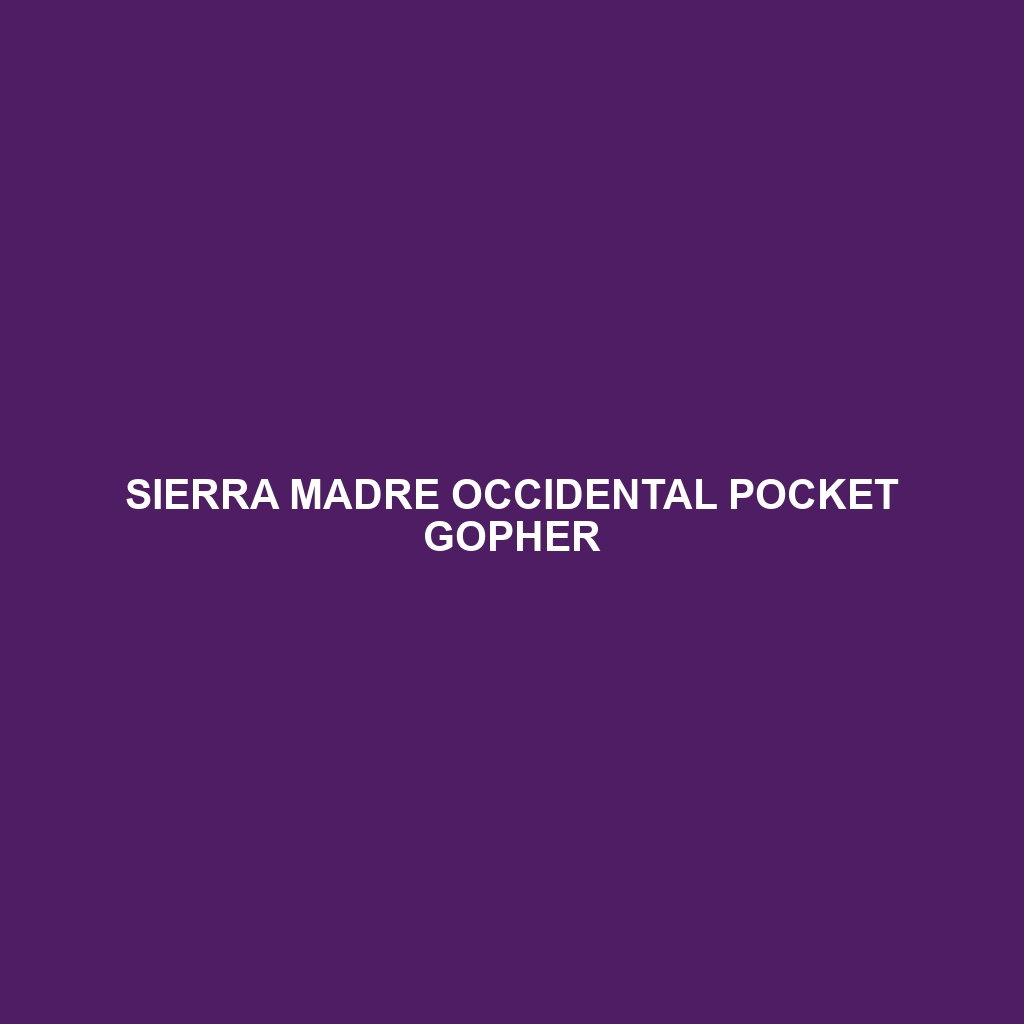Sierra Madre Occidental Pocket Gopher
Common Name: Sierra Madre Occidental Pocket Gopher
Scientific Name: Thomomys umbrinus
Habitat
The Sierra Madre Occidental Pocket Gopher is primarily found in the mountainous regions of northwestern Mexico, particularly within the Sierra Madre Occidental range. This pocket gopher thrives in a variety of environments, including temperate forests and grasslands at elevations ranging from 1,000 to 3,000 meters. Its burrowing activities are often associated with loamy, well-drained soils that allow for easy excavation, making it a vital component of the local ecosystem.
Physical Characteristics
The Sierra Madre Occidental Pocket Gopher typically measures between 20 to 25 centimeters in length, with a robust, cylindrical body. Its fur is soft and dense, primarily featuring a brownish-gray coloration that provides excellent camouflage in its natural habitat. Distinctive features include short limbs and large, curved incisors adapted for digging. These gophers possess small eyes and ears, which are well-suited for their underground lifestyle, allowing them to navigate effectively in darkness.
Behavior
Sierra Madre Occidental Pocket Gophers exhibit primarily solitary behavior, preferring to live alone in their extensive underground burrow systems. They are known for their impressive digging skills, creating complex tunnel networks that can stretch for meters underground. These animals are generally nocturnal, emerging primarily at dusk to forage for food. Their activities significantly impact the soil structure and aeration, which can enhance local plant growth.
Diet
The diet of the Sierra Madre Occidental Pocket Gopher consists mainly of roots, tubers, and various plant materials. They are herbivorous and prefer to feed on native grasses and the roots of shrubs, making them essential for seed dispersal and plant propagation. Their foraging behavior plays a critical role in shaping the vegetation dynamics of their habitats.
Reproduction
The reproductive season for the Sierra Madre Occidental Pocket Gopher typically occurs in late spring to early summer. After a gestation period of approximately 22 to 24 days, females give birth to litters consisting of three to five offspring. The young are born blind and hairless, relying on their mother for nourishment until they reach maturity around three months of age. Parental care is critical for survival during the early stages of their life.
Conservation Status
Currently, the Sierra Madre Occidental Pocket Gopher is classified as ‘Vulnerable’ by various conservation organizations. Habitat loss due to urban development and agricultural activities poses a significant threat to their populations. Preservation of natural habitats is necessary to ensure the survival of this unique species.
Interesting Facts
One fascinating fact about the Sierra Madre Occidental Pocket Gopher is its ability to dig up to 150 m (approximately 500 ft) of tunnels in a single night. Their unique behaviors, such as caching food and creating specific chambers for sleeping, are remarkable adaptations to their underground lifestyle. Moreover, these gophers are an important food source for various predators, including owls and foxes.
Role in Ecosystem
As a keystone species, the Sierra Madre Occidental Pocket Gopher plays a critical role in maintaining the ecological balance within its habitat. Their burrowing activities enhance soil aeration and nutrient distribution, which supports plant growth and helps stabilize the landscape. Additionally, their tunneling contributes to the overall health of grassland ecosystems by promoting biodiversity and facilitating the growth of various flora and fauna.
